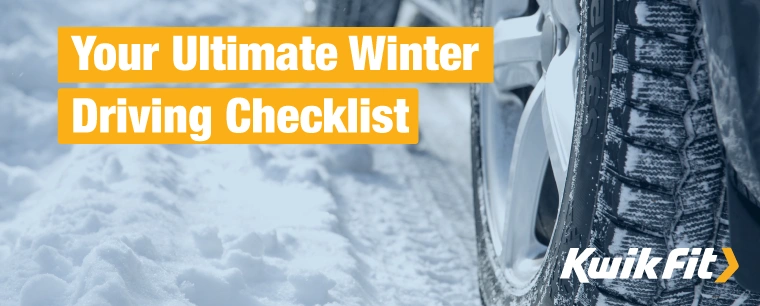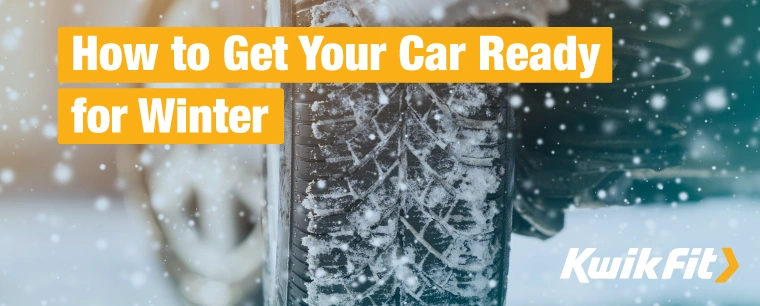Why checking your tyre pressure regularly could save you money in the long run
Bradley Jando | Wednesday 1st September 2021 10:00am
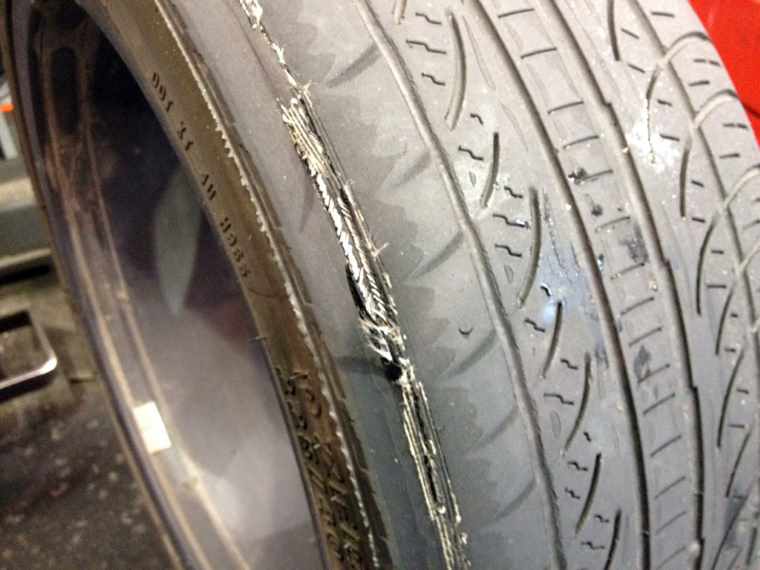
 How often do you check your tyre pressure? If the answer is less than once a month, then this blog might be a game-changer for you.
How often do you check your tyre pressure? If the answer is less than once a month, then this blog might be a game-changer for you.
It can be easy to neglect routine tyre maintenance, especially if your tyres appear to be in working order. However, on some occasions, you may not notice any issues until a problem occurs.
Under-inflated tyres that fall under the recommended tyre pressure pose a safety risk to you and your passengers, due to the increased likelihood of tyre failure. You can reduce the potential risk, as well as save money, simply by making sure your tyres are correctly inflated with a tyre pressure check. After all, having the correct tyre pressure matters.
Under-inflated tyres
Tyres generally lose up to two pounds of air per month. This leads to your tyres quickly becoming under-inflated if you don’t keep an eye on them, making it crucial to perform a tyre pressure check weekly or before a long journey.
Under-inflated tyres have uneven contact with the road and, when left underinflated, your tyres will exhibit excessive wear on the inside and outside edges of the tread.
Not only does under-inflation mean that your tyres will wear out quicker (leaving you to replace them sooner than if they had the correct tyre pressure) but you’ll also experience increased rolling resistance with the road. While you might not feel this added resistance when driving, you’ll be getting fewer miles to the gallon, costing you more pounds at the pump.
Under-inflated tyres can also affect your steering, depending on the location of the underinflated tyre. If it’s at the front of your vehicle, you’re likely to experience understeering. Under-inflated rear tyres, on the other hand, will increase oversteering.
In the event that all your tyres are under-inflated, your steering will be sluggish. Not to mention that all of your tyres being underinflated increases the risk of them blowing out - it becomes 4 times as likely, in fact. If that isn’t enough to convince you to get your tyres pumped up, we don’t know what is!
Over-inflated tyres
When it comes to over-inflated tyres, the risks are typically overlooked. Many drivers will say: “Surely over-inflated tyres can’t be that bad? The tyres will deflate to the correct tyre pressure eventually.”
This is a dangerous school of thought, as over inflating your tyres could be just as damaging and costly, often leading to premature tyre replacement. Over-inflated tyres have less contact with the road, meaning that you have less traction and will experience longer and less efficient braking distances. This poses a dangerous threat that can easily go unidentified without a routine tyre pressure check.
Because the centre of the tyre is making all the contact with the road, rather than distributing the contact across the entire surface of the tyre, your tyres wear heavily and unevenly across the central part of the tyre. This will mean that your tyres won’t last as long, and you’ll be resigned to buying replacement tyres much sooner than you expect.
How to spot an under-inflated or over-inflated tyre
Being able to spot the signs of under or over-inflation is simple once you know what you’re looking for. Tyres that have been incorrectly inflated will show increased wear at the points at which the tyre makes contact with the road, whether that’s the centre of the tyre or the inner and outer edges of the tread. A properly inflated tyre will wear evenly across the width of the tread.
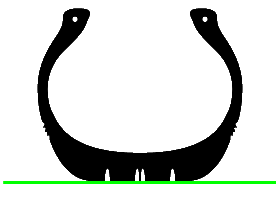
Correct Inflation

Under inflation

Over Inflation

An under inflated tyre showing excessive wear along the inner and outer edges of the tyre
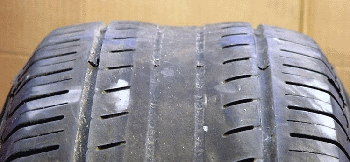
An over inflated tyre showing excessive wear across the middle section of the tyre
UK Tyre Law
In the UK, the legal minimum limit for tyre tread is 1.6mm. This tread depth must be consistent across the central three quarters, across the width of the tyre, and all the way around. So, even if the tread down the middle of the tyre meets this requirement, if your tyres show signs of excessive and irregular wear, you could be fined or penalised.
How to check your tyre pressure
Before checking your tyre pressure, you’ll need to know what the correct tyre pressure is for your vehicle. Your vehicle handbook will list the recommended tyre pressures for your car, or it may be printed in the sill of the driver’s door. Alternatively, you can use our tyre pressure calculator tool to work out the correct tyre pressure for your vehicle.
Most petrol station forecourts offer an air pump, either free of charge or for a small fee. If paying, we recommend removing your tyre valve caps before inserting your money as you will be given limited time to use the machine. Set the compressed air machine to the correct tyre pressure, and then place the hose end over the tyre valve.
The machine will tell you what the current pressure of the tyre is and will inflate to the desired tyre pressure. Once complete, the machine will beep and you can then release the hose and move on to the next tyre. Remember to reset the desired pressure on the machine if your front and rear recommended tyre pressures are different.
Check your tyre pressure at Kwik Fit
Here at Kwik Fit, driver safety is our primary concern. We offer a free tyre checking service, ideal if you’re concerned about irregular tyre wear, are unsure of how to check your tyre pressure, or simply want us to check your tyre pressures for you.
You can book a free pressure check online or visit your nearest Kwik Fit centre today.
Any facts, figures and prices shown in our blog articles are correct at time of publication.
Featured Articles
Is Your Car Battery Ready for Winter?
Monday 11th November 2024
Is the UK on the verge of ‘the coldest winter for 50 years?’ Even if El Niño doesn't hit the UK this winter, reduce the risk of a winter breakdown by making sure your car battery is winter-ready.
Your Ultimate Winter Driving Checklist
Monday 31st October 2022
Driving in the colder months presents many challenges. Breakdowns are far more common in winter, so make sure you’re prepared with these essentials.
How to Get Your Car Ready for Winter
Wednesday 28th September 2022
Winter can be a harsh season for your car but planning ahead by carrying out some basic maintenance and packing some essential kit should help you avoid a winter breakdown.


